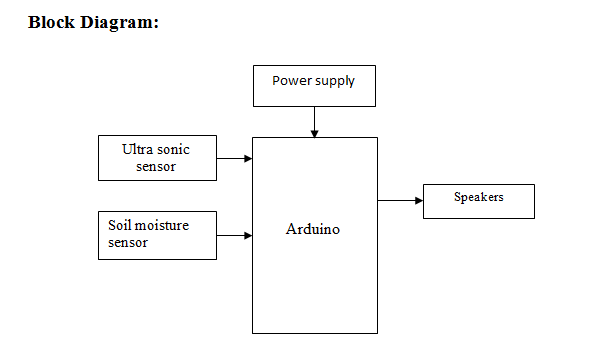Smart Guiding Glasses For Visually Impaired People In Indoor Environment Using Arduino
Also Available Domains Machine Learning
Objective
The main objective of this project is to navigate visually impaired people in an indoor environment with the help of raspberry pi by identifying the objects that are present in his path and guiding him through speech via headphones.
Abstract
To overcome difficulty in indoor environment for the visually impaired group, this project presents a novel ETA (Electronic Travel Aids)-smart guiding device in the shape of a pair of eyeglasses for giving these people guidance efficiently and safely. Different from existing works, a novel multi-sensor fusion based obstacle avoiding algorithm is proposed, which utilizes both the soil moisture sensor and an ultrasonic sensor to solve the problems of detecting small obstacles, and transparent obstacles, e.g. the French door. This system developed to inform the direction where they can go ahead for Blind people. The prototype consisting of a camera and an ultrasonic sensor is developed, and its efficiency and accuracy were tested by several users. The experimental results show that smart guiding glasses can effectively improve the user’s traveling experience in the complicated indoor environment. Thus it serves as a consumer device for helping the visually impaired people to travel safely
NOTE: Without the concern of our team, please don't submit to the college. This Abstract varies based on student requirements.
Block Diagram

Specifications
Hardware Requirements:
- Arduino .
- Ultrasonic sensor
- Soil Moisture Sensor
- Speaker
- Power supply
- 12v 1a adapter
Software Requirements:
- Arduino IDE
- Embedded C
Learning Outcomes
- Micro controller pin diagram and architecture
- How to install Arduino IDE software
- Setting up and installation procedure for Arduino
- Introduction to Arduino IDE
- Basic coding in Arduino IDE
- About Project Development Life Cycle:
- Planning and Requirement Gathering ((Hardware components, etc.,)
- Hardware development and debugging
- Development of the Project and Output testing
- Practical exposure to:
- Hardware tools.
- Solution providing for real time problems.
- Working with team/ individual.
- Work on Creative ideas.
- Project development Skills
- Problem analyzing skills
- Problem solving skills
- Creativity and imaginary skills
- Testing skills
- presentation skills
- Thesis writing skills





 Paper Publishing
Paper Publishing
